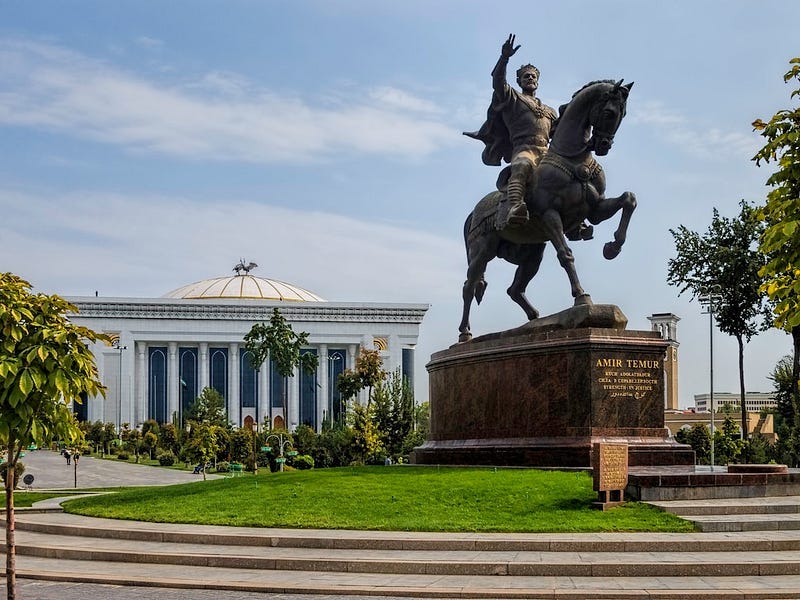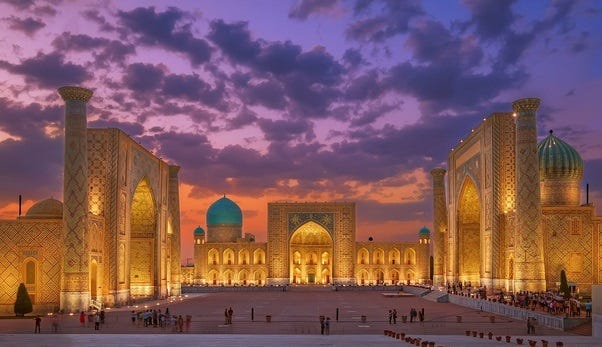Rise and Fall of Empires in Central Asia
The Silk Road and the Central Asian region have long been the crossroads of empires, and the plaything of numerous conquerors throughout history. Only in the 13th century would it be united under the rule of the Mongol Empire, the largest contiguous empire in history. but this would not last for long.
The Mongol Empire disintegrated into several autonomous khanates by the 14th century. The eastern portion of the former empire became the Ming Dynasty of China. Turko-Mongol (Tatar) peoples would dominate the other three khanates. The Golden Horde consisted of the northwestern sector of the former empire, and at its peak included most of eastern Europe from the Ural Mountains to the Danube River, and extended eastward deep into Siberia. The southeastern sector consisting of Greater Iran became the Ilkhanate, and the remainder of Central Asia became the Chagatai Khanate.
Infighting amongst the warlords of these smaller khanates led to their disintegration, and then reunification by more brutal conquerors. One of these warlords, Tokhtamysh, forcibly reunited the Golden Horde in the 1380s and began incursions into northern Iran. During this time, Timur, a Tatar nobleman, had risen to power over the Chagatai Khanate in Central Asia. In 1380, he began a series of campaigns to conquer the eastern kingdoms of the former Ilkhanate. He eventually drove across the Middle East, conquering Baghdad, and by 1385 had arrived in the Caucasus mountains at the border of the Golden Horde.
In 1385, Tokhtamysh invaded and sacked Tabriz in northwestern Iran. In response, Timur led an army of 100,000 men from Tashkent north some 700 miles into the Asian steppe, and then another 1,000 miles west to the Volga river. In 1392, he invaded through the Caucasus and decisively defeated the Horde in 1395 at Terek River. This eliminated the main obstacle in the establishment of his Timurid Empire across Greater Iran. From here, he proceeded to invade the western territories of the Horde, threatening Moscow. By the end of the war, all of the major cities of the Golden Horde had been destroyed.
On the foundation of this fearsome military campaign, Timur would go on to establish one of the most powerful empires in the world at the time. His capitol of Samarkand in modern Uzbekistan would become a center of Islamic scholarship and the site of the artistic and scientific revival known as the Timurid Rennaissance.




